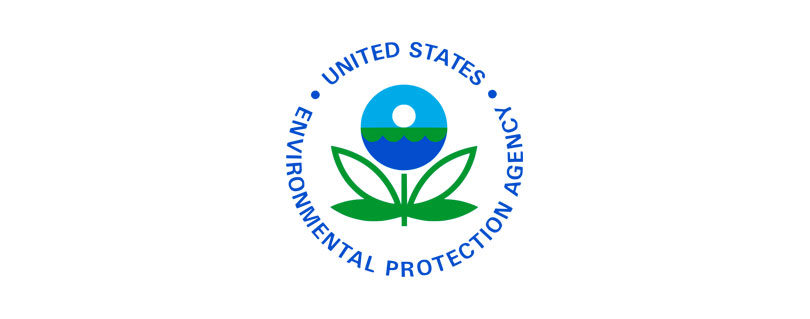Biden-Harris Administration Announces $974,348 for Two Community Air Pollution Monitoring Projects in Georgia
Publilshed by the U.S. Environmental Protection Agency (EPA)
ATLANTA (November 3, 2022) – Today, the U.S. Environmental Protection Agency (EPA) has selected the Center for Sustainable Communities and Environmental Community Action Inc., to receive funding to conduct community air quality monitoring in several underserved communities. These grants are among 132 air monitoring projects in 37 states will receive $53.4 million from President Biden’s Inflation Reduction Act and American Rescue Plan to enhance air quality monitoring in communities across the United States. The projects are focused on communities that are underserved, historically marginalized, and overburdened by pollution, supporting President Biden’s Justice40 Initiative.
“These Community Air Monitoring Grants will improve and empower marginalized communities throughout Georgia’s Fifth Congressional District. I thank both the Center for Sustainable Communities and Environmental Community Action Inc. for being co-conspirators for environmental justice. These grants are further proof that the Inflation Reduction Act and American Rescue Plan are investing in our communities and we’re just getting started,” said Congresswoman Nikema Williams, a member of the House Transportation and Infrastructure Committee.
“These grants will give communities in the Southeast the tools they need to better understand air quality challenges in their neighborhoods,” said EPA Region 4 Administrator Daniel Blackman. “EPA’s investment in ARP funding will not only advance the agency’s mobile air monitoring labs and air sensor loan programs but improve the agency’s ability to support communities in need of short-term monitoring and air quality information.”
Center for Sustainable Communities – $498,401.00
MAP-USA will deploy commercially available PM2.5 sensors in 11 minority communities located in the region of South Atlanta, Georgia. Partnering with public schools, the monitors will be in areas where there is heightened concern over potential health impacts due to the proximity of these neighborhoods to heavily traveled transportation corridors, and for which there is no existing air quality monitoring capability. A non-profit organization with experience in managing community-based environmental and science and technology projects in Atlanta will lead the project with the assistance of experts at a Tier-1 research university that is anchored in the local community. The project will also develop leadership and analytical capacity in the community through technical training and the development of lesson plans that will be used with students at the schools where the monitors are located. The objective is to empower these under-resourced communities to collect, analyze, and use the data to draw conclusions related to the causes and effects of air quality.
Environmental Community Action Inc. – $475,947.00
ECO-Action, working in partnership with Emory University and other nonprofit organizations, will install air monitoring equipment, collect air samples, share sample data and train residents in five communities so they can advance their advocacy efforts to address longstanding air quality problems where they live. Project outputs include deploying 7 air quality monitors (three of which will be furnished using EPA funds) in underserved communities to collect data over a one-year period; making near real-time air quality data available for the communities and other stakeholders; providing 8-10 training sessions to a minimum of 75 people and working with each of 5 communities to develop specific strategies to reduce the effects of air pollutants on their health. The long-term outcome of this project is to reduce human exposure to the identified pollutants. The shorter-term objectives are to provide additional data that helps community members identify the type and extent of the problems they are confronting, increase community awareness of the risks associated with air pollutants in their communities, and to increase access to information and tools that will help community members decrease the impacts of these pollutants on the environment and on their health.
The air pollution monitoring projects are made possible by more than $30 million in Inflation Reduction Act funds, which supplemented $20 million from the American Rescue Plan and enabled EPA to support 77 additional projects, more than twice the number of projects initially proposed by community-based nonprofit organizations, state and local governments, and Tribal governments.
These grant selections further the goals of President Biden’s Justice40 Initiative and Executive Order, Tackling the Climate Crisis at Home and Abroad, which directed that 40 percent of the overall benefits of certain Federal investments flow to overburdened communities that face disproportionately high and adverse health and environmental impacts. By enhancing air monitoring and encouraging partnerships with communities, EPA is investing in efforts to better protect people’s health, particularly those in underserved communities.
EPA will start the process to award the funding by the end of 2022, once the grant applicants have met all legal and administrative requirements. Grantees will have three years to spend the funds from the time EPA awards the grants.
See the full list of applications selected for award.
Background
In spring 2021, Congress passed the American Rescue Plan, providing EPA with a one-time supplemental appropriation of $100 million to address health outcome disparities from pollution and the COVID-19 pandemic. Half of that $100 million, was dedicated to air quality monitoring. EPA Regions began awarding nearly $22.5 million from this appropriation in 2022 as direct awards to state, tribal, and local air agencies for continuous monitoring of fine particle and other common pollutants. In addition, EPA Regions are in the process of procuring monitoring equipment using $5 million in American Rescue Plan funding to advance the EPA Regional Offices’ mobile air monitoring capacity and establish air sensor loan programs. . These investments will improve EPA’s ability to support communities that need short-term monitoring and air quality information.
In July 2021, EPA announced the $20 million American Rescue Plan Enhanced Air Quality Monitoring for Communities Grant Competition. The goal of this competition was to improve air quality monitoring in and near underserved communities across the United States, support community efforts to monitor their own air quality, and promote air quality monitoring partnerships between communities and tribal, state, and local governments. EPA received more than 200 applications in response to the competition.
The Inflation Reduction Act of 2022 provides funding to EPA to deploy, integrate, support, and maintain fenceline air monitoring, screening air monitoring, national air toxics trend stations, and other air toxics and community monitoring. Specifically, the Inflation Reduction Act provides funding for grants and other activities under section 103 and section 105 of the Clean Air Act. EPA is using approximately $32.3 million of this funding to select 77 high-scoring community monitoring applications.
Read the full article at: https://www.epa.gov/newsreleases/biden-harris-administration-announces-974348-two-community-air-pollution-monitoring



